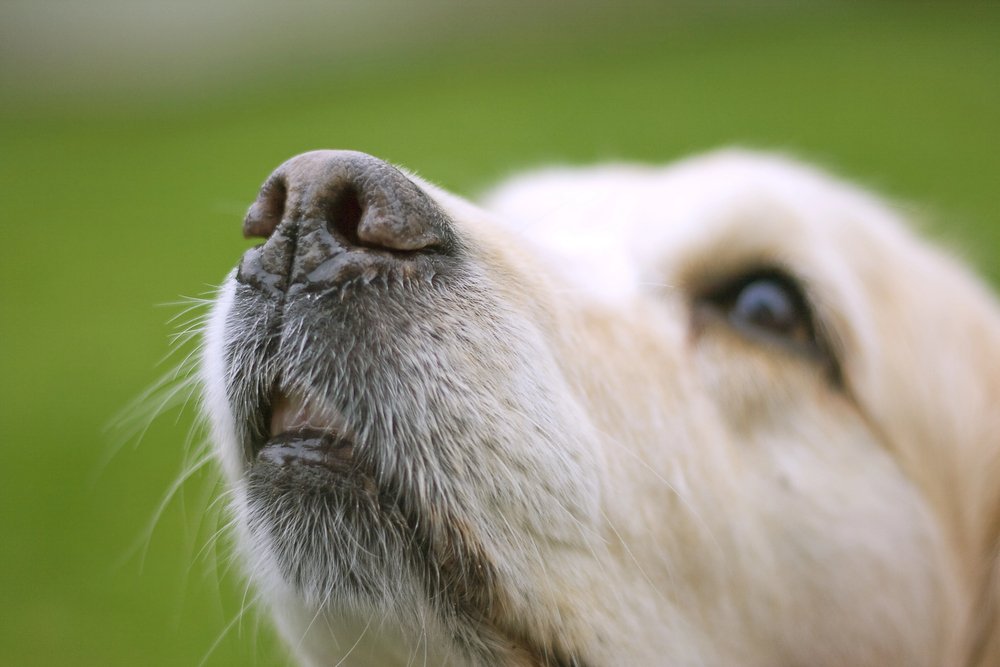Dogs perceive the world differently from humans, not only through their remarkable sense of smell but also through their unique visual capabilities. While often misunderstood, a dog’s vision is specially adapted for their needs. This adaptation offers fascinating insights into how they interact with their environment. Here, we’ll explore 10 extraordinary facts about a dog’s vision, showcasing the marvels of their visual capabilities.
Color Perception in Dogs

One common misconception is that dogs are completely colorblind. However, this is not entirely true. Dogs see colors, but not in the same way humans do. While humans possess three types of color-detecting cells (cones) in their eyes, dogs have only two. This means that dogs see a world primarily in shades of blue and yellow, somewhat similar to how a person with red-green color blindness might perceive colors. The limited color perception does not hinder their ability to enjoy the vibrancy of their surroundings.
Night Vision Superiority

Dogs have an advantage over humans when it comes to vision in low-light conditions. Thanks to a higher number of rods in their retinas and a special layer known as the tapetum lucidum, dogs have superior night vision. The tapetum lucidum reflects light that passes through the retina back into the eye, offering a second chance to capture photons, thereby enhancing their ability to see in the dark. This capability harks back to their ancestry, where keen night vision was essential for survival during the nocturnal hunt.
Field of View and Peripheral Vision

Dogs have a broader field of view than humans, helping them detect motion and threats from various directions. This wider field of view ranges approximately from 240 degrees to 270 degrees, depending on the breed, compared to the typical human field of view of about 180 degrees. This adaptation is particularly useful, offering them enhanced situational awareness during hunting and protecting them from potential dangers in the wild.
Motion Sensitivity

If your dog seems particularly adept at catching a thrown ball or quickly noticing a squirrel darting up a tree, it’s because their vision is finely tuned to detect motion. Dogs are more sensitive to motion than humans, thanks to their higher number of rod cells, which excel at movement detection. This trait likely emerged from their wild ancestors, where sharp motion detection was crucial in capturing prey and avoiding predators.
Focus and Near-Sightedness

Dogs generally have a more challenging time focusing on objects that are close compared to humans. This is due to their lens shape and muscle structure, which are optimized for distance rather than close-up vision. Consequently, dogs are considered nearsighted—while they can spot a moving object from afar with relative ease, they might struggle to identify it clearly when it’s close. This aligns with their evolutionary history, where tracking and spotting prey at a distance was more critical than scrutinizing objects up close.
Breed Variations in Vision

The visual capabilities of dogs can vary significantly between breeds. For example, long-nosed breeds like Greyhounds have a panoramic view that aids in spotting prey over a wide area, while short-nosed breeds like Bulldogs might have less peripheral vision. Additionally, the placement and shape of a dog’s eyes can contribute to differences in their field of view and depth perception, highlighting the diversity among breeds when it comes to vision.
Depth Perception

Dogs have less refined depth perception compared to humans. This is primarily due to the lateral placement of their eyes, which provide a wider field of view but compromise their ability to judge distance accurately. However, they compensate for this limitation with their acute sense of smell and movement detection, allowing them to effectively navigate their surroundings and assess situations, even when visual cues are less reliable.
Vision and Aging

As dogs age, changes in their vision can occur, similar to aging in humans. Older dogs might experience cloudiness in the lens, leading to cataracts, or develop glaucoma, which increases eye pressure and can affect vision. Regular veterinary check-ups are crucial to monitor these changes and to implement measures such as medication or surgeries, if necessary, to maintain their quality of life.
Understanding Visual Communication

While dogs rely on scent more than vision for communication, visual signals still play a crucial role in their interactions. Subtle changes in their body language, the positioning of their ears, or eye movement can convey a wide range of emotions and intentions to both humans and other dogs. Understanding these visual cues can help improve the bond and communication between you and your canine companion, making it easier to interpret their needs and feelings.
The Protective Role of Whiskers

Though not directly related to eyesight, a dog’s whiskers serve an important ancillary function to their vision. These specialized hairs are incredibly sensitive, helping dogs detect changes in their environment that are not visible. They can sense minute vibrations in the air, letting a dog know about obstacles, objects, or approaching entities. This additional sensory function is invaluable, particularly for navigating tight or dimly lit spaces. A dog’s vision is a tapestry woven from evolutionary threads, each adapted for survival and companionship. From remarkable night vision to unique color perception, these traits combine to create a sophisticated visual system. By understanding and appreciating these extraordinary facts, we gain a deeper insight into our canine friends’ world, enhancing our ability to care for and communicate with them.

Esther is from India; the heartbeat of South Asia, holding a Master’s degree in Zoology and a postgraduate diploma in Animal Welfare. Her enthusiasm for animal welfare drives her passion and dedication to working for animals, ensuring their well-being, and advocating for their rights. With a solid academic background and hands-on experience, she is committed to making a positive impact in the field of animal welfare. In her free time, she enjoys embroidery and sewing. As a Chennaite from Tamil Nadu, Esther loves Bharathanatyam, an Indian classical dance form.






